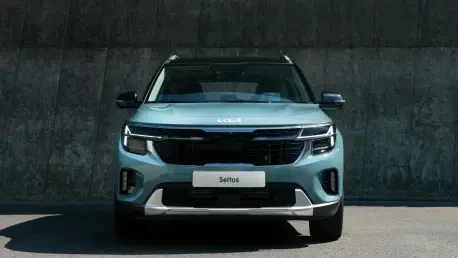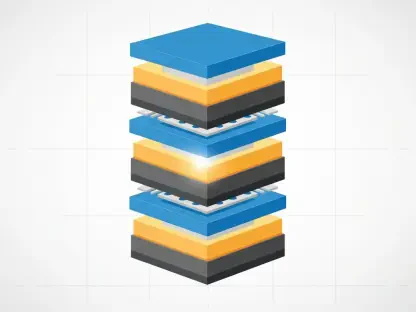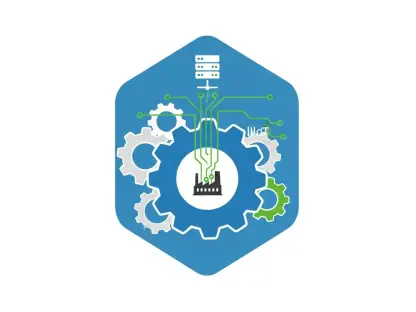In 2024, the electric vehicle (EV) market stands at a pivotal juncture, with global sales surpassing 17 million units—a remarkable achievement that underscores the industry’s progress—yet grappling with a stark deceleration in growth rates that once soared at 60% annually just a couple of years ago. This slowdown, now down to a mere 15% by mid-2025, signals a shift from the rapid, subsidy-fueled expansion of the past to a more challenging and mature phase of development. EVs account for over 20% of new car sales worldwide, a testament to their growing acceptance, but the cooling momentum raises pressing questions about the sustainability of this transition. Major markets like Europe, the United States, and China are all feeling the strain, driven by diminishing government incentives, economic headwinds, and lingering consumer doubts. Automakers, once laser-focused on full electrification, are now recalibrating their strategies, while related industries and policymakers adapt to an evolving landscape. This moment is less about a retreat from EVs and more about confronting real-world hurdles that test the resilience of the electric revolution. The path ahead demands a balance of innovation, affordability, and infrastructure growth to ensure long-term success in a sector that remains critical to global sustainability goals.
Market Trends and Challenges
Global Sales Growth Slowdown
The trajectory of EV sales growth has taken a noticeable downturn in 2024, despite the impressive tally of over 17 million units sold globally, reflecting a robust market in absolute numbers. While the figures are strong, the year-over-year growth rate has plummeted from historical highs to a more modest 15% by mid-2025, a clear indicator of underlying challenges. This deceleration is evident across key regions, with each facing distinct yet interconnected issues. In China, the world’s largest EV market, growth has slowed to just 6%, hinting at saturation in certain consumer segments. Europe, meanwhile, contends with stagnating sales as government subsidies are scaled back, leaving buyers less incentivized to make the switch. The United States has seen an even sharper decline, with growth dropping from 40% in 2023 to a mere 10% in 2024, largely due to policy rollbacks and expiring tax credits. Economic pressures, including inflation and rising interest rates, further dampen demand as consumers prioritize affordability over environmental benefits. This global trend underscores a critical shift: the initial wave of early adopters has largely been tapped, and broader market penetration now hinges on overcoming systemic barriers.
Beyond the regional disparities, the root causes of this slowdown point to a broader recalibration of market dynamics. Government incentives, once a primary driver of EV adoption, are being phased out or reduced in many areas, particularly in Europe and North America, where fiscal priorities are shifting. In Germany and the UK, for instance, purchase subsidies have been curtailed, while the U.S. has relaxed federal fuel-economy standards, easing pressure on automakers to push EVs aggressively. Economic uncertainty compounds these policy changes, as potential buyers hesitate to invest in higher-priced electric models amid tighter budgets. The result is a market that, while still growing in absolute terms, struggles to maintain the explosive momentum of prior years. For stakeholders, this slowdown serves as a wake-up call to address structural issues like cost and accessibility if the industry hopes to regain its earlier pace.
Consumer Hesitancy and Barriers
A significant factor in the EV market’s cooling growth is the persistent hesitancy among consumers, who face a range of practical and financial concerns that deter widespread adoption. High upfront costs remain a primary obstacle, with many electric models priced at a premium compared to their internal combustion engine counterparts, even as battery costs decline. Range anxiety—the fear of running out of power without access to charging—continues to loom large, particularly in regions where long-distance travel is common and charging infrastructure remains sparse. This concern is compounded by the uneven distribution of charging stations, which often cluster in urban areas while leaving rural and suburban drivers underserved. As government incentives dwindle, the financial justification for choosing an EV over a conventional vehicle weakens, leaving many potential buyers on the fence. These barriers collectively slow the transition, highlighting the gap between technological promise and everyday usability.
In response to these challenges, a growing number of consumers are turning to hybrid vehicles, both plug-in and traditional, as a compromise that offers flexibility without the full commitment to electric. Hybrids mitigate range concerns with their dual power systems and often come with lower price tags than pure EVs, making them an attractive middle ground for cost-conscious buyers. This shift in preference is reshaping market demand, pushing automakers to diversify their offerings rather than focus solely on battery electric vehicles. The resurgence of hybrids also reflects a broader consumer sentiment: while there is interest in sustainable options, the infrastructure and economics of EVs are not yet aligned with mainstream needs. Addressing these pain points—through better pricing strategies and expanded charging networks—will be essential to converting skeptics into adopters and sustaining long-term growth.
Strategic Responses from Automakers
Reevaluation of Electrification Goals
Faced with slowing EV growth, major automakers are undergoing a significant reassessment of their once-ambitious electrification targets, signaling a pragmatic pivot in strategy for 2024. Companies like Stellantis, Volvo, and Volkswagen, previously committed to fully electric lineups by 2030 or sooner, have scaled back these goals in favor of a more balanced approach. Stellantis, for instance, has abandoned its all-EV plan for Europe, while Volvo has dropped its fully electric target, opting instead to retain hybrid options. Volkswagen, alongside Mercedes-Benz and General Motors, is reinvesting in internal combustion engine technologies as a hedge against slower-than-expected EV uptake. This shift reflects a growing acknowledgment that the road to full electrification is more complex and protracted than initially envisioned, driven by consumer resistance and policy uncertainties. Rather than risk overextending on EVs alone, these firms are diversifying their portfolios to maintain market relevance.
This strategic retreat from EV-only ambitions is not a rejection of electrification but a response to immediate market realities that demand flexibility, reflecting a pragmatic approach to consumer needs and infrastructure challenges. The focus on hybrids—seen as a bridge technology—allows automakers to cater to consumers who seek greener options without the limitations of current EV infrastructure. This diversification also mitigates financial risks, as producing a mix of powertrains spreads exposure across varying demand patterns. For industry giants, the move signals a return to adaptability, reminiscent of past transitions like the rise of fuel-efficient cars during oil crises. However, it also raises questions about long-term commitments to sustainability goals, especially as environmental mandates loom. The balancing act between short-term profitability and future readiness will define how these companies navigate the evolving automotive landscape.
Focus on Affordability and Innovation
To counter the growth slowdown, automakers are prioritizing affordability in 2024, aiming to make EVs accessible to a broader audience beyond early adopters by tackling the barrier of high price points. Companies are now focusing on developing lower-cost models that compete with traditional vehicles on sticker price. This includes streamlining production processes and leveraging economies of scale to reduce costs, particularly for batteries, which remain a significant expense. Additionally, offering diverse vehicle types—such as compact cars and affordable SUVs—caters to varied consumer preferences, expanding market reach. The goal is to shift EVs from a niche, premium product to a mainstream choice, addressing one of the core reasons for consumer hesitancy. This push for affordability is seen as a critical step to reignite growth in a market cooling from subsidy withdrawals.
Innovation also plays a central role in this strategy, with automakers and tech firms exploring solutions to lower barriers and enhance EV appeal. Advances in battery technology, such as solid-state batteries promising longer ranges and faster charging, are on the horizon, though widespread adoption remains years away. In the interim, alternative business models like battery swapping—where drivers exchange depleted batteries for charged ones—or subscription services for battery access are gaining traction as ways to reduce upfront costs. These approaches aim to alleviate financial and practical concerns, making EVs more viable for the average buyer. If successful, such innovations could bridge the gap between current limitations and future potential, positioning the industry for a resurgence as infrastructure catches up with ambition.
Broader Industry and Policy Impacts
Supply Chain and Energy Market Effects
The slowdown in EV market growth in 2024 reverberates through the automotive supply chain, creating a mixed bag of challenges and opportunities for related industries. Suppliers of EV-specific components, such as batteries and electric drivetrains, face uncertainty as automakers revise production forecasts downward in response to cooling demand. Battery manufacturers like LG Energy Solution and CATL are experiencing pricing pressures and fluctuating orders, prompting a reassessment of capacity expansions. Conversely, suppliers tied to hybrid and internal combustion engine technologies are seeing a resurgence of interest as companies diversify their offerings. This shift highlights the volatility within the supply chain, where adaptability to changing automaker strategies becomes paramount. The ripple effects underscore how interconnected the transition to electrification is with broader industrial ecosystems.
Beyond component suppliers, the energy sector feels the impact of slower EV adoption, as prolonged reliance on fossil fuels becomes an unintended consequence of this trend. With fewer EVs on the road than projected, demand for gasoline and diesel remains higher, delaying the anticipated decline in oil consumption. This dynamic poses challenges for energy markets aiming to align with global sustainability targets, while also affecting investment in renewable energy sources tied to EV charging. Charging infrastructure providers like ChargePoint and EVgo, though still poised for growth, face delayed profitability in regions where adoption lags. The broader implication is a temporary stall in the energy transition, pushing stakeholders to balance short-term realities with long-term environmental goals. This tension will likely shape investment priorities for years to come.
Government Policy Shifts
Government policies surrounding EVs are at a turning point in 2024, as many regions move away from direct purchase incentives toward a more balanced approach focused on infrastructure development. In Europe and North America, subsidies that once drove early adoption are being phased out, with countries like Germany and the UK reducing financial perks for buyers. Instead, funds are increasingly allocated to expanding charging networks and supporting grid enhancements to address practical barriers. The European Union’s decision to extend emission targets, potentially resulting in two million fewer EVs sold between 2025 and 2027, reflects a cautious recalibration of mandates to match market readiness. This shift indicates a recognition that forcing rapid electrification without adequate support structures risks consumer backlash and economic strain.
This policy evolution mirrors historical industry transformations, where regulatory adjustments often followed market feedback to ensure sustainable progress. In the United States, the rollback of certain federal fuel-economy standards and the expiration of tax credits have contributed to the sharp drop in EV growth, prompting debates over how best to stimulate demand without overreliance on handouts. Globally, the trend toward infrastructure investment suggests a longer-term vision, prioritizing systemic readiness over immediate sales boosts. While this approach may slow the pace of adoption in the short term, it aims to build a more resilient foundation for electrification. The challenge lies in striking a balance between environmental ambitions and economic realities, a dilemma that will continue to shape policy frameworks in key markets.
Regional Disparities and Competitive Dynamics
Uneven Growth Across Markets
The EV market’s growth slowdown in 2024 reveals stark regional disparities, with adoption rates varying widely due to local policies, economic conditions, and cultural factors. China, the dominant player in EV sales, has seen its growth taper to just 6% by mid-2025, a sign of potential saturation in urban and high-income segments where early adopters have already embraced the technology. This cooling pace suggests that further expansion will require targeting less penetrated markets or addressing affordability for the masses. Meanwhile, Europe faces stagnation as subsidy cuts in countries like Norway and Sweden dampen consumer enthusiasm, compounded by unchanged CO2 targets that fail to push automakers harder. These regional challenges highlight how dependent EV growth remains on tailored policy support and market-specific solutions.
In contrast, the United States presents a particularly steep decline, with growth falling from 40% in 2023 to 10% in 2024, driven by inconsistent federal policies and waning tax incentives. The relaxation of fuel-economy standards has reduced pressure on manufacturers to prioritize EVs, while economic uncertainty further curbs consumer spending on pricier electric models. This fragmented global picture paints a complex landscape, where some regions push aggressively for electrification while others lag, maintaining mixed fleets for longer. The uneven pace suggests a bifurcated future for the EV market, with disparities likely to persist until infrastructure and cost barriers are universally addressed. For global automakers, navigating these differences requires localized strategies to align with distinct market dynamics.
Winners and Losers in the Market
As the EV market slows in 2024, the competitive landscape is undergoing a significant reshuffle, with clear winners and losers emerging based on adaptability and product diversity. Companies like Toyota, Hyundai, and Kia are gaining ground thanks to their strong hybrid offerings, which appeal to consumers seeking a middle path between traditional and electric vehicles. Their established expertise in hybrid technology positions them well to capitalize on the current market shift, providing a buffer against the volatility of pure EV demand. This flexibility allows them to maintain sales momentum while others struggle to pivot, underscoring the value of a diversified portfolio in uncertain times. The success of these firms serves as a model for balancing innovation with pragmatism.
On the flip side, pure EV manufacturers and premium-focused brands face mounting pressures as competition intensifies and growth slows, highlighting the challenges in an increasingly crowded market. Tesla, despite its market leadership, has resorted to price cuts to defend its position, reflecting tighter margins and heightened rivalry from both traditional automakers and emerging players like BYD. Smaller startups and firms like Nissan, constrained by supply chain issues such as battery shortages, risk losing relevance as they struggle to scale production or innovate quickly enough. The widening gap between adaptable giants and vulnerable niche players illustrates how critical resilience and strategic foresight are in this transitional phase. As the industry evolves, the ability to weather short-term setbacks while investing in long-term solutions will separate the leaders from the laggards.
Navigating the Path to a Sustainable Electric Future
Reflecting on the EV market’s journey through 2024, the slowdown in growth emerged as a defining chapter, marking a shift from unchecked optimism to a more measured approach grounded in practical realities. The industry grappled with declining growth rates, consumer hesitancy, and policy shifts, prompting automakers to rethink aggressive electrification timelines in favor of diversified strategies. Regional disparities and competitive dynamics further complicated the landscape, as global markets adapted at varying paces to economic and structural challenges. This period underscored the fragility of progress when reliant on subsidies and highlighted the need for systemic solutions to sustain momentum.
Looking ahead, the focus must center on actionable steps to overcome current hurdles and build a resilient foundation for electrification, ensuring a sustainable path forward for the industry. Prioritizing affordability through lower-cost EV models and innovative business approaches can broaden consumer access, while aggressive expansion of charging infrastructure remains essential to alleviate range concerns. Policymakers should continue shifting toward long-term investments in grid capacity and public charging networks, ensuring support aligns with market readiness. For automakers, embracing flexibility—balancing EVs with hybrids—offers a pragmatic way to navigate uncertainty. As competition intensifies, supply chain innovation, particularly in battery materials, will be a key differentiator. This transitional phase, though challenging, sets the stage for a more sustainable electric future if stakeholders commit to adaptability and collaboration.









